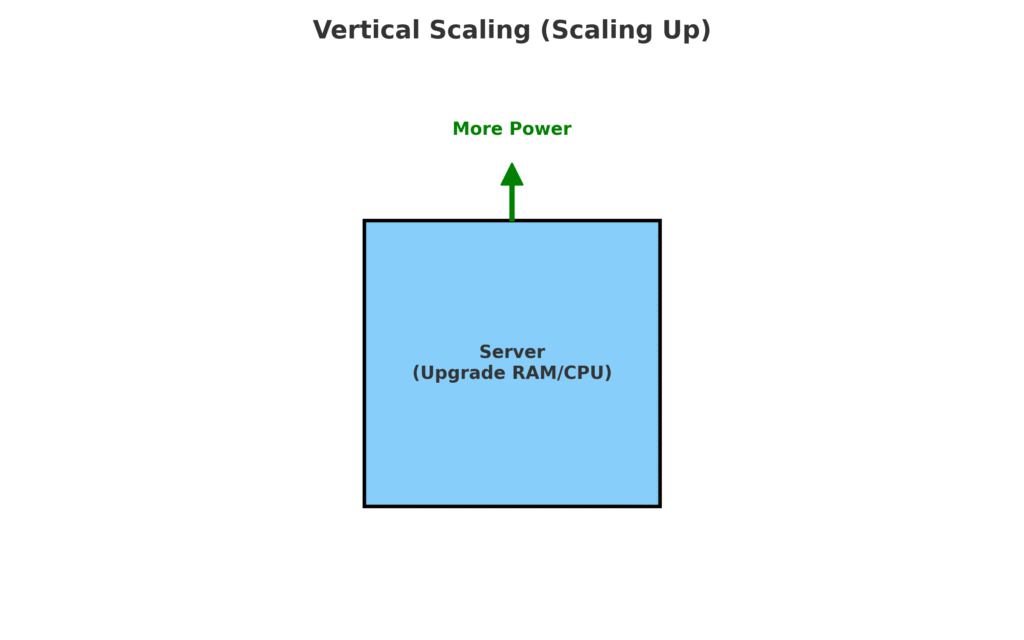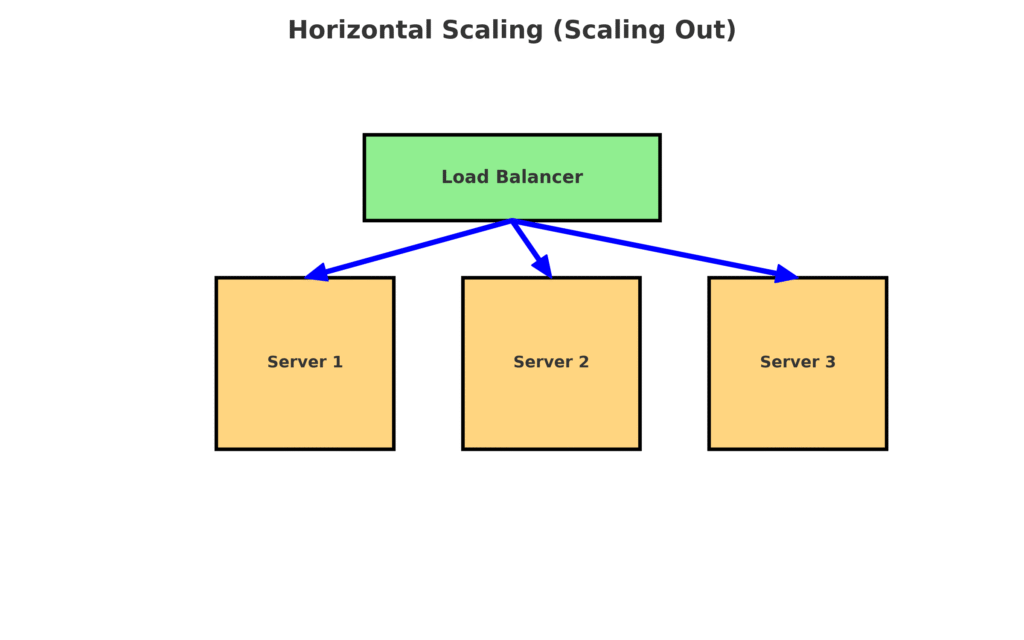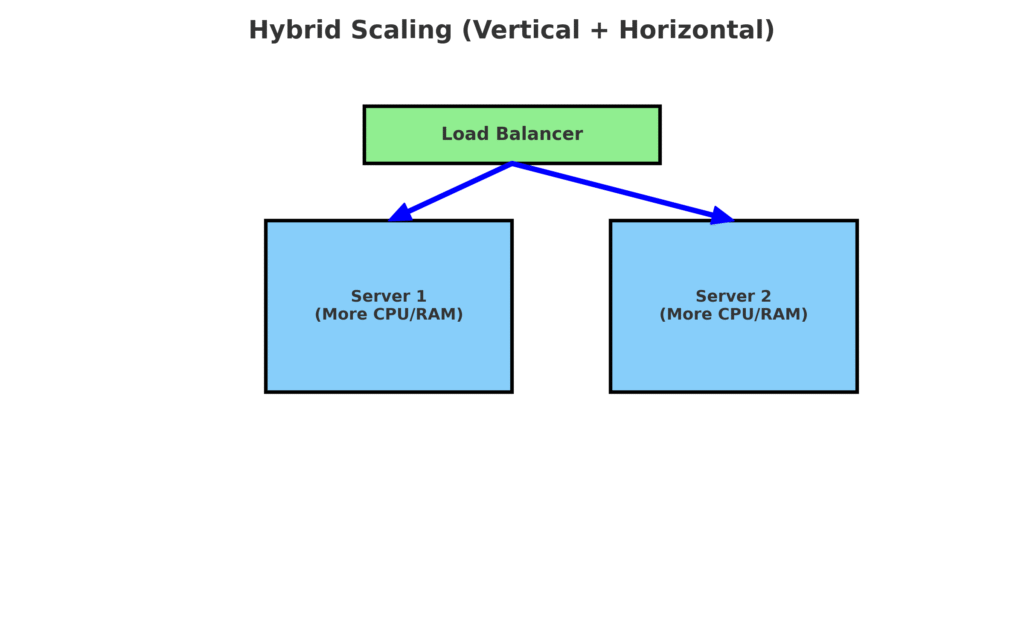Scaling in System Design: Scaling refers to a system’s ability to handle increased load (more requests, more users, more data) by adjusting its resources. The goal is to ensure that the system continues to perform well as demand grows.
There are two main types:
- Vertical Scaling (Scaling Up)
- Horizontal Scaling (Scaling Out)
1. Vertical Scaling (Scaling Up)

Vertical scaling means increasing the capacity of a single machine. This can be achieved by adding more CPU, RAM, disk, or network bandwidth.
Example: Upgrading a server from 4 cores, 16GB RAM to 16 cores, 64GB RAM.
Pros:
- Simple to implement (just upgrade the hardware).
- No code or architecture changes required.
- Useful for monolithic and small-scale applications.
- Easier to manage since only one system needs to be maintained.
Cons:
- Limited by hardware (you can’t scale forever).
- High-end machines become expensive quickly.
- Single point of failure remains → downtime risk increases.
2. Horizontal Scaling (Scaling Out)

Horizontal scaling means adding more machines/servers to share the load. Work is distributed across multiple load balancers, clusters, or distributed systems.
Example: Instead of one large server, run 10 smaller servers behind a load balancer.
Pros:
- Almost unlimited scalability.
- Better performance (load is distributed).
- High availability and fault tolerance (failure in one node can be handled by others).
Cons:
- More complex to manage.
- Requires synchronization and consistency across nodes.
- Needs orchestration tools (e.g., Kubernetes).
3. Key Differences Between Vertical and Horizontal Scaling
| Aspect | Vertical Scaling (Scaling Up) | Horizontal Scaling (Scaling Out) |
|---|---|---|
| Approach | Add more power (CPU, RAM) to a single machine | Add more machines to distribute the workload |
| Example | Upgrading server CPU, RAM, or storage | Adding multiple servers behind a load balancer |
| Complexity | Relatively simple to implement | More complex due to distributed system architecture |
| Scalability | Limited by maximum capacity of a single machine | Virtually unlimited by adding more nodes |
| Fault Tolerance | Low — failure of the machine can cause downtime | High — failure of one node doesn’t take down the system |
| Cost | Becomes expensive as hardware limits are reached | More cost-efficient over time with commodity hardware |
4. When to Use Vertical Scaling
- Best for systems that cannot be easily distributed.
- Quick fix when apps need more resources.
- Examples:
- Databases like PostgreSQL/MySQL.
- Monolithic applications (e.g., Java Spring Boot app running on a single server).
5. When to Use Horizontal Scaling
- Best for systems handling massive growth (millions of users).
- High availability and fault tolerance are priorities.
- Examples:
- Social media platforms (Facebook, Twitter, YouTube).
- Search engines (Google distributes queries across servers).
- Content Delivery Networks (CDNs) serving content closer to users.
6. Hybrid Scaling (Combining Both)

Often, real-world systems use a combination of both vertical and horizontal scaling.
- First, give each machine a decent baseline (vertical scaling).
- Example: Upgrade from 1-core, 2GB server → 16-core, 64GB server.
- Then, add multiple such machines (horizontal scaling) to handle extra load.
Benefits:
- Efficiency and cost optimization.
- Balanced performance.
- Fault tolerance + power.
Real-World Examples:
- Netflix → Each VM has vertical capacity, but thousands run across regions.
- Kubernetes clusters → Each pod runs on a vertically scaled node, and pods scale horizontally with traffic.
Conclusion
- Vertical scaling is simple but limited and costly.
- Horizontal scaling provides massive scalability but requires complexity.
- Hybrid scaling combines both for optimal results in large-scale systems.